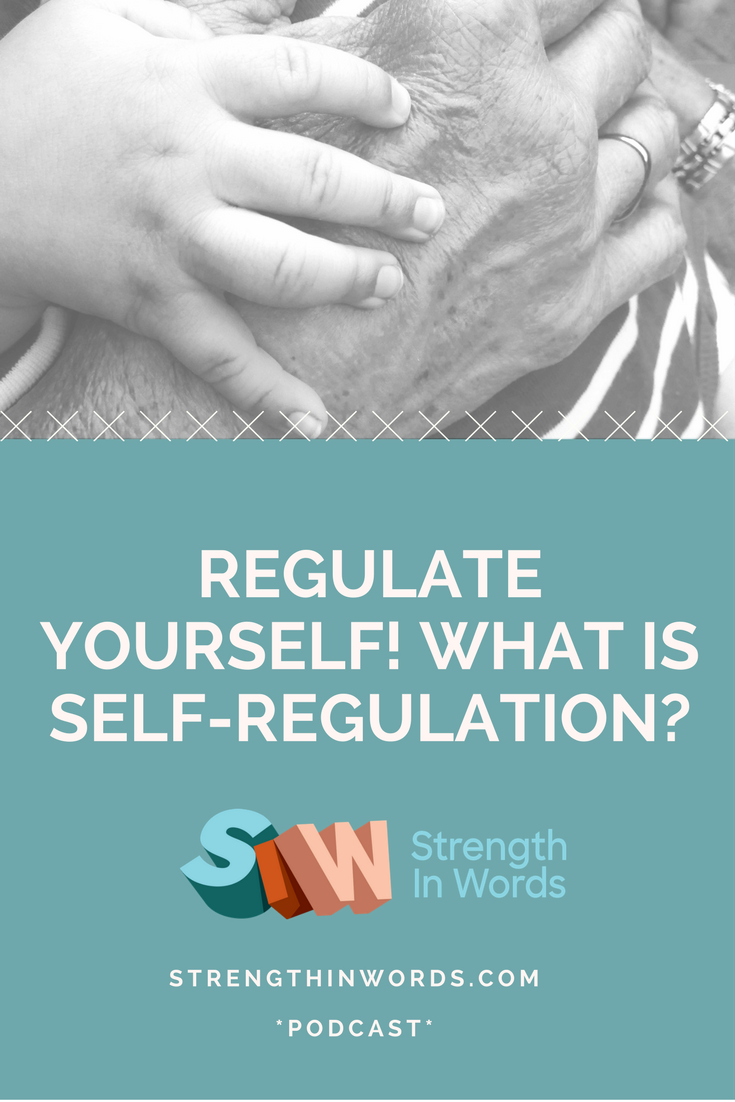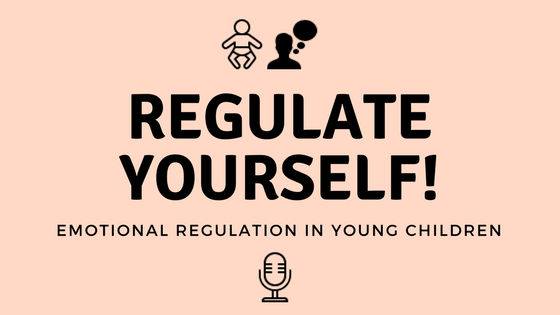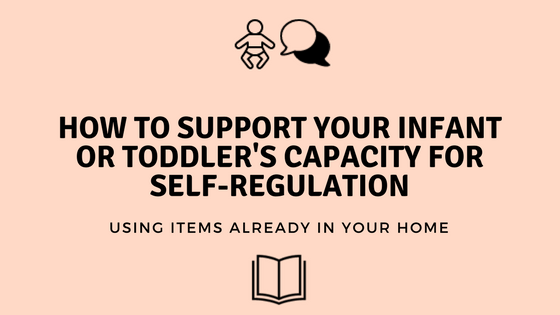What is self-regulation? What is emotional regulation?

On this episode of Learn With Less, Ayelet explores these terms and how to support this sometimes tricky part of your infant and/or toddler’s development.
Below is the transcript of this week’s “Developmental Thought,” an excerpt from the full episode.
For additional information, music, play ideas and the complete interactive family experience, please listen to the entire episode.
Self-regulation. Most of us have heard the term, but what does it really mean? We know it has to do with emotions, how we respond to situations, and whether we have the tools in place to do so effectively.
Most of us struggle with it to some degree (let’s face it, especially when challenged by sleep deprivation or a grumpy toddler)… but something for all parents and caregivers of young children to remember is that all infants and toddlers struggle with it!
I want to speak specifically about the emotional component of self-regulation, or “emotional regulation.”
>>Don’t Miss Our Corresponding Blog Post<<
Regulating Emotions
Our emotional responses are, most basically, physical, neurological and biochemical reactions to situations and stimuli presented from outside our bodies. This includes bodily processes like heart rate, blood flow, respiration, and more. Our ability to self-regulate has to do with the maturation of our brains – for instance, throughout infancy, the frontal lobe is developing rapidly.
This is an area we know is involved in the ability to regulate emotions and perform what’s known as “executive functioning” skills (think here about the skills an “executive” needs to perform – like the ability to plan, behave appropriately, solve problems, etc).
We also know that emotional responses are part of temperament and behavior. We can think of the way emotions are expressed through actions – when a young child cries, laughs, or withdraws from an activity, she is communicating a behavioral response of sorts.
Finally, emotional responses are linked to our cognitive abilities. For a young child to be able to participate in or complete a task – whether that is in the context of play, eating, or other routines – she must be able to attend to what she’s doing.
She needs to be able to problem-solve a way to get what she wants if she is feeling hungry, tired, frustrated, or dissatisfied, and she needs the language to express that feeling to those around her.
Responsive Teaching
So, these three areas (physical, behavioral, and cognitive) are all involved in the development of emotional regulation. And we’re not born with the ability to regulate our emotions, just like we’re not born able to walk or speak. We have to learn, through imitation, practice, and observation, how to get our needs met.
Like anything else, this takes time, and is influenced by responsive caregiving. When we as parents and caregivers are consistent in our responses, we positively model and shape the ways that our infants and toddlers respond to their environment. We’ve spoken in past episodes about providing “scaffolding” or “channeling Goldilocks” and providing the developmentally appropriate level of support based on what our child is currently able to do.
This is absolutely related to the area of self-regulation, as we have to apply the same level of expectation to our child’s ability to use appropriate emotional responses [according to early childhood educator Dr. Ida Rose Florez, quoted in above link].
When we calm our little ones when they’re frustrated, when we recognize that they’re no longer able to attend to an activity and therefore end it or make it easier – we respond and allow them to understand that they can rely on us to provide what’s necessary for them to succeed and feel supported.
When we give them the tools to express themselves through language, when we react to their emotional responses with patience and grace, we allow them to build confidence and, eventually, build the skills necessary to independently begin to regulate their emotions. Remember, many adults have difficulty with emotional regulation, so the key here is to give our little ones plenty of opportunities to imitate, practice, and observe others.
Emotional Language
We spoke a lot about what emotional regulation is, but what are some of the ways that we can support its development in our young children? One way is through the use of emotional language – this includes talking about one’s own feelings, the feelings and emotions we witness, and the words we use to reflect back what we witness our children feeling.
This also includes the acceptance of our children’s emotions – and the recognition that not all emotional responses are pretty… so, what does that look like in practice?
Develop Coping Skills
One of the most obvious ways is a reaction many of us use as a default. When our toddler falls and scrapes her knee and then starts to cry, we want her to feel better. We want to move her to a place where she feels emotionally regulated again. So our tendency is often to direct our little one’s feelings, saying, “don’t be sad,” or “you’re ok, you don’t need to cry about that.”
When we think about what we’re actually communicating with that response, we’re essentially discouraging them to recognize how they feel, and we’re telling them that these responses are the wrong way to feel. But… we all feel sad sometimes, right? We all just need to have a good cry or feel sorry for ourselves for a minute.
And actually, what we are trying to do is to give them coping skills so that they can move through those moments effectively… so that they can take a situation in which they have a disregulated emotional response, and then independently move back into a place where they feel able and confident and capable.
So a more effective way to do that is to reflect back to them what you think they’re feeling: “you’re feeling really sad. That hurt! Ouch! I saw you fall down. Let’s see, when I feel sad I sometimes need to take a break or get a hug. Do you think either of those things would help?”
Guiding Through Empathy
When you do that, you give them the word for the emotion, you model empathy, you provide some possible solutions, and you guide your little one through towards the other side. Once you’ve done that, then distraction through a preferred activity, a change in the environment (a quiet, less busy, more dimly lit environment, perhaps) or a simple redirection of topic might do the trick.
Giving our young children the tools to regulate their emotions effectively helps them build independence in the long run. I’m not encouraging over-indulgence, over-reactive responses, or the “spoiling” of young children. I’m encouraging the following, which is based on guidelines from the National Association for The Education of Young Families and Developmental & Educational Psychologist Dr. Martha Bronson’s research, for strategies to help young children to self-regulate.
- Observe your infant and toddler closely, looking for cues that tell you how they’re feeling
- Respond to your young child, and make attempts to be interactive and attentive to signals in your little one’s routine that help her make sense of routines and transitions
- Provide structure and predictability
- Arrange developmentally appropriate environments so young children can access appropriate play materials as independently as possible
- Define age-appropriate limits, helping your little one feel safe by providing the rules for engagement and the understanding of what’s expected
- Show empathy and caring, allowing your little one to feel confident that you understand what it is she’s trying to express, and that you are there to support her so that she can, in time, better handle those big feelings on her own
No Quick Fix
What’s perhaps most important, and something we can apply to nearly all aspects of infant and toddler learning, is that these kinds of social/emotional and cognitive skills take time to develop, and often require heavy lifting from us in order to effectively support our children toward independence.

